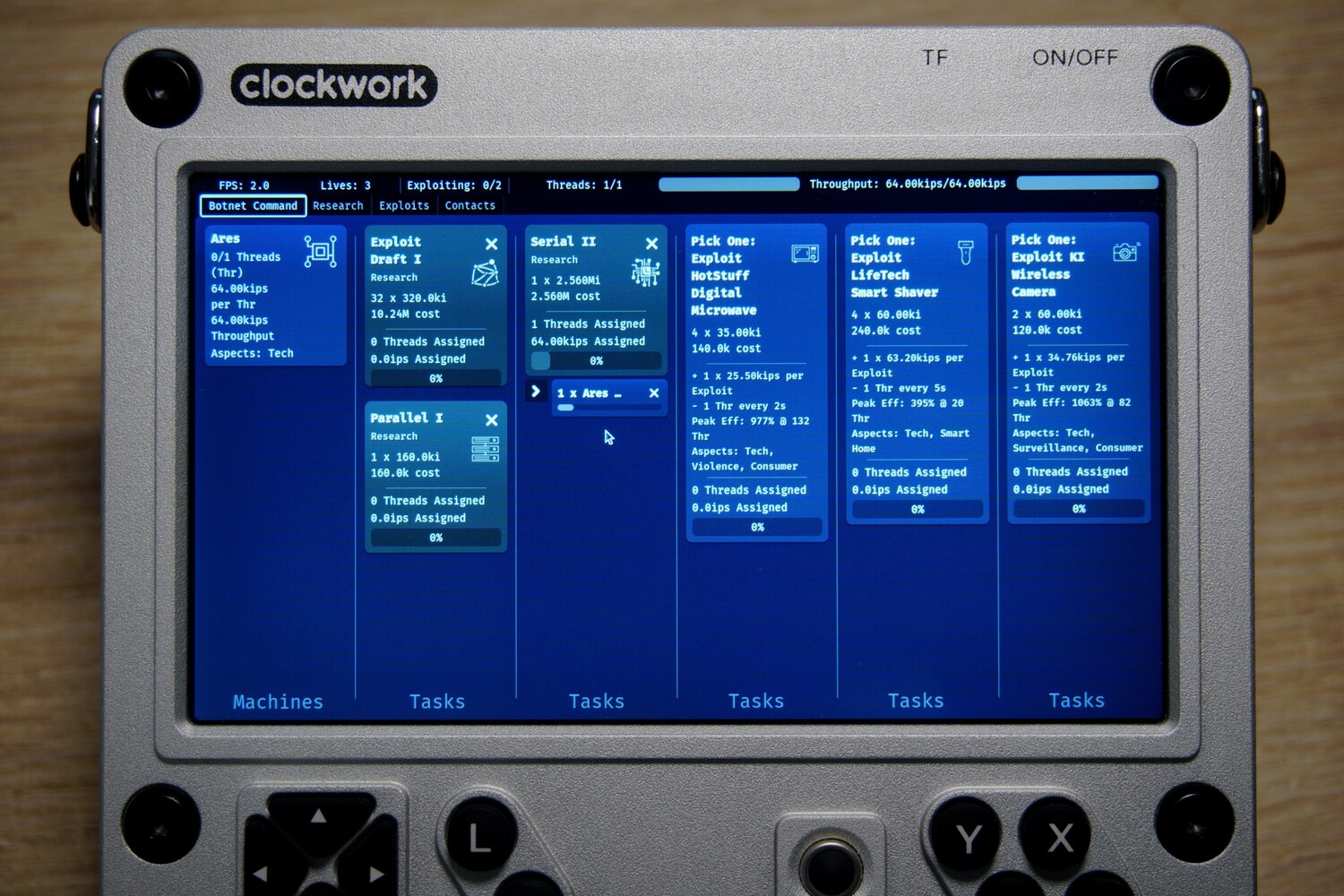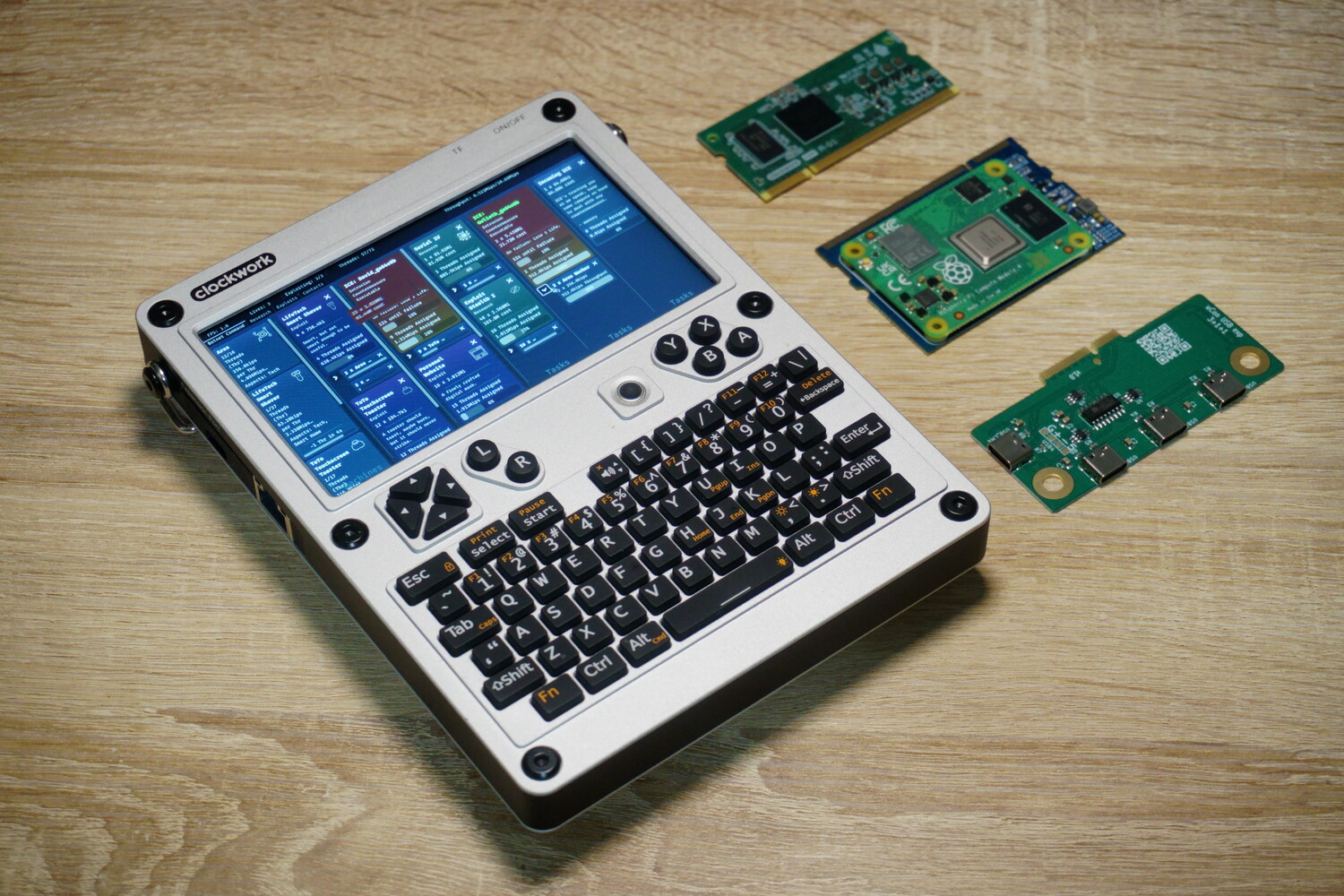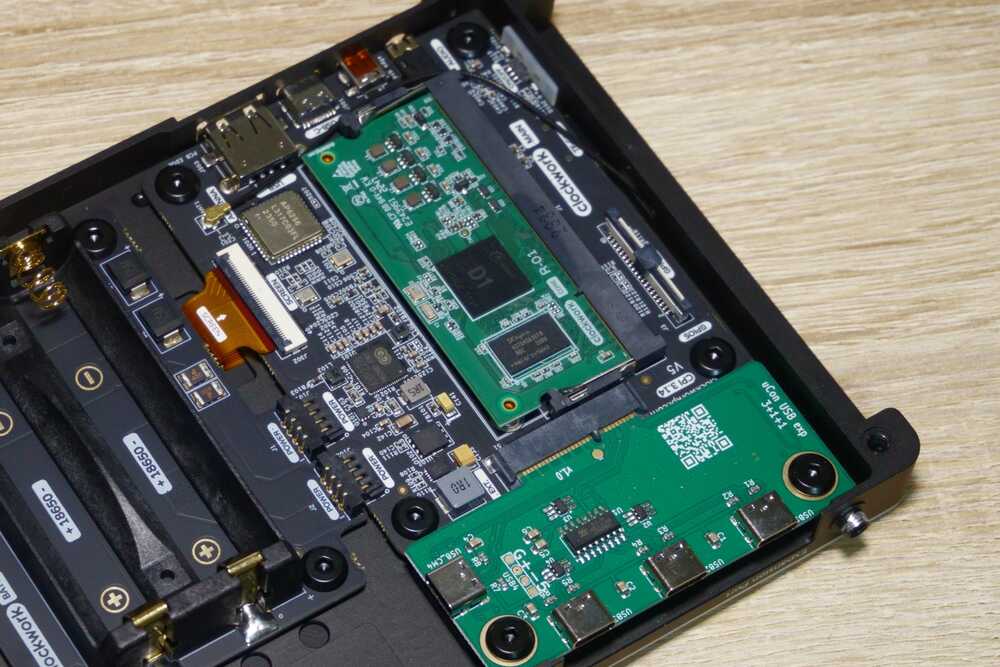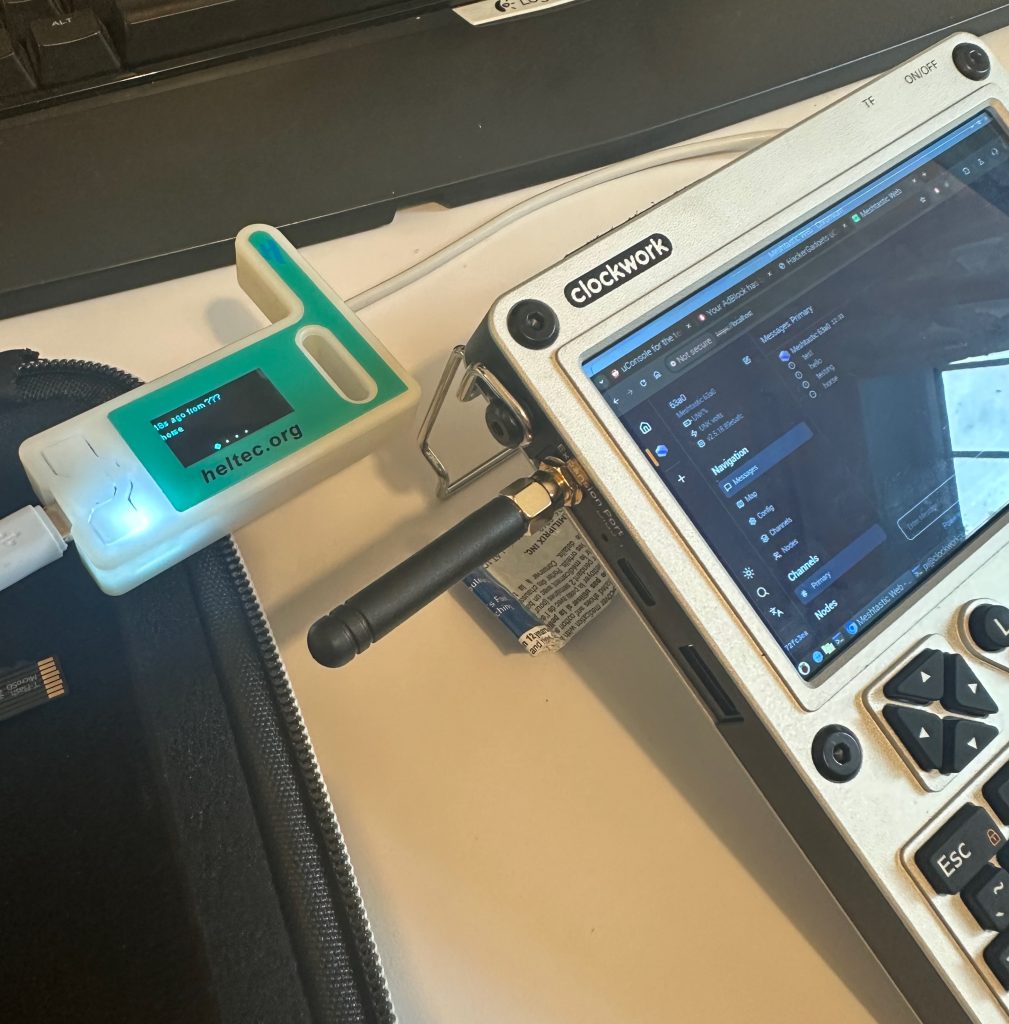Physical Address
304 North Cardinal St.
Dorchester Center, MA 02124
Physical Address
304 North Cardinal St.
Dorchester Center, MA 02124

In this first in a series of interviews with CyberDeck enthusiasts, uConsole World sits down with Alex Tiniuc to hear what he is up to on his uConsole.
When Alexandru Tiniuc reached out about collaborating, I was intrigued. He’s an embedded software engineer with a passion for the uConsole and like many of us, he was drawn to the computer’s cyberdeck charm. We jumped on a video call to talk about his experiences with the device, his thoughts on cyberdeck culture, and what projects he has going.
uCW: What got you interested in the uConsole?
Alex: By trade I’m an embedded software engineer. I’ve mostly worked with microcontrollers and Linux systems, mostly on the IoT side — things like digital radio protocols. More recently, I’ve been working on home routers, the kind of devices that provide Wi-Fi in apartments or houses.
As for the uConsole, I discovered it through an article on a tech news aggregator called Lobsters. The article was titled Post-Apocalyptic Computing, and in it I saw a picture of the DevTerm. That was about six months ago. I left a comment on the article saying, “Wow, that looks super cool, I want to build one.” And I couldn’t stop thinking about this little device ever since.
uCW: Do you have a DevTerm as well?
Alex: No, I don’t. Judging by the reviews, I’m not sure it would suit my use case — it seems like more of a “worse laptop,” whereas the uConsole feels like a more novel handheld computer.
uCW: Yeah, the uConsole seems to have gained more traction than some of those earlier products. The PicoCalc is also taking off. One thing I wanted to ask about — the uConsole supports so many different boards. I don’t know if they ever sold it with the Raspberry Pi Compute Module 3, but you managed to get the CM3 running on it. How did you do that?
Alex: The DevTerm originally launched with the Compute Module 3, then was updated for the Compute Module 4 when that came out. The uConsole is based on an updated DevTerm motherboard, so CM3 support wasn’t too hard.
Getting it running wasn’t difficult. I downloaded Rex’s Debian image from the forums — that’s the go-to Debian distribution these days — plugged it in, powered it up, and it just worked. Honestly, it wouldn’t have been possible without the community. There’s a lot of open-source work behind that image.
uCW: So how did you get hold of your first uConsole?
Alex: After discovering it, I kept checking eBay. About two months ago I placed an order directly with Clockwork, which I’m still waiting on. But the unit I actually use came from eBay — I was at a live concert with my fiancée when I saw an email about an R01 model in gray. It was a bit more expensive than new, but still reasonable, so I ordered it on the spot.

uCW: So you’ve got the RISC-V-based model. Have you done anything interesting with the R-01 chip?
Alex: The R-01 is held back by the lack of a GPU. The CPU is responsive, but graphics are painfully slow. Firefox won’t run — I use a lighter browser without JavaScript. I’ve networked it, connected to other machines over SSH, but the graphical side is very limited.
I’d like to run it headless — no desktop environment, just console. Or maybe cut the screen resolution in half to reduce load. Right now, even a fullscreen animation maxes the CPU. But the chip is otherwise capable, and my Ubuntu image runs a full package manager with everything you’d expect.

uCW: I heard the R-01 has good battery life though?
Alex: Yes, I measured about 10–12 hours idle. For a terminal or SSH device, that’s excellent.
uCW: Switching gears — what does the term “cyberdeck” mean to you, and how does the uConsole fit in?
Alex: I’ve read a lot of cyberpunk literature. The word “deck” comes from William Gibson’s 1984 novel Neuromancer. In those books, a deck is a portable computer for hacking into systems.
I think the cyberdeck trend today is partly a countercultural reaction to modern computing. Smartphones are all the same: big touchscreen, rear camera, built for consumption, not creation. Cyberdecks let people be more creative, build specialized devices, and step away from mainstream consumer hardware. The uConsole feels like a real-life version of that.
uCW: Do you have other cyberdeck projects on the go?
Alex: Just the uConsole for now. I’m more of a software guy, though I have a degree in electronics. Designing a custom deck takes a lot of CAD and integration work, and I don’t have the time right now.
uCW: Have you modded your uConsole at all?
Alex: My favorite setup includes the uEther expansion board. I’m also working on fitting a three-battery connector inside the case — tricky, but maybe possible with a custom PCB.
I’ve ordered a Hacker Gadgets antenna expander for better Wi-Fi. Out of the box, uConsole connectivity is poor. I also managed to get a second uConsole with 4G expansion board, which was a lucky find. That’ll be very useful once I attach a proper antenna.
uCW: With your expertise, would you ever want to build a 5G modem expansion card?
Alex: That would be tough. Most modern 5G modules come pre-packaged, so in theory you could integrate one. But Pi-based devices have bottlenecks, so even if you had 5G speeds, the rest of the system might not keep up.
uCW: What’s next for your uConsole?
Alex: I found a reseller in China selling CM4 adapters, which I haven’t been able to get otherwise. I’m really excited to upgrade to CM4 — the CM3 is okay for basic browsing, but slow. I’m also waiting on antennas to improve Wi-Fi and make the 4G board more usable.

uCW: If you could dream up an expansion board, what would you want?
Alex: An aftermarket CM4 adapter would be top of the list. Beyond that, I’d love an IoT-focused radio module — something like Zigbee, Thread, or Matter. It would make the uConsole a great portable tool for IoT troubleshooting. Thread is probably the best bet, since it’s open-source and getting industry traction.
uCW: You’re also developing a game, right? Tell me about that.
Alex: Yes — it’s a hacking simulator inspired by classics like Uplink and Hacknet called Botnet of Ares. But instead of hacking one or two computers, it lets you exploit millions and build massive botnets.
It fits the uConsole aesthetic perfectly: a sleek, hacker-style device running a hacking simulator. I like the fantasy of it — I’d never exploit systems illegally in real life, but this lets me enjoy the theme safely.
uCW: When do you expect to release it?
Alex: Hopefully next year. Game dev has a saying: “It’s always six months away.” The demo will be free on Steam soon. I’ll also provide an ARM binary for the uConsole. There isn’t really an app store for it, but players will be able to run it manually.
uCW: Well, if you need CM4 or CM5 testing, let me know — I’ve got a CM5 running on mine!
Alex: Excellent, I’ll keep that in mind.
uCW: Before we wrap up — do you have any questions for me?
Alex: Sure — what do you use your uConsole for?
uCW: I do a lot of audiovisual work, often with headless servers. For me, one killer accessory is Openterface’s KVM expansion board — HDMI in, USB out, and battery-powered. The software they wrote is pretty great! It replaces the need to carry a field monitor, battery and keyboard.

I’ve also tested the Hacker Gadgets all-in-one board and used the uConsole as a Meshtastic terminal. I even built a little LLM chatbot relay so I could test mesh range in my rural area without other users nearby. For me, the uConsole is about tinkering around without having to be distracted on my smartphone or sitting at a desk PC.
Alex: I like that. I keep my uConsole free of social media — I want it to be a device for learning, tinkering, and reading technical docs, not for distraction.
uCW: Totally! Thanks so much for your time, Alex
You can follow Alex’s work and updates on Botnet of Ares through his website — and keep an eye out for the demo coming soon.
[…] with any Cybertopic, there’s debate as to why, but as we discussed with Alex a few weeks ago, it’s more about the feeling and the resistance to the status quo more than […]